The Mackie Building’s Major Renovation
135-year-old building will be beautified and renovated to create 26 apartments, and a proposal for a modernistic "Mackie Building South" could connect to it.
Last week, a miniature downtown took shape in the lobby of the historic 1879 Mackie Building, which is undergoing an extensive remodeling.
The model, designed by UW-Milwaukee architecture students, and accompanying displays, show the buildings in the immediate vicinity of the historic landmark at 225 E. Michigan St., and in a fanciful touch, outlined eight potential sites for new buildings, mostly now parking lots. The most prominent of the proposed buildings would be on the northwest corner of N. Broadway and E. Clybourn St., where a mixed-use, five-story structure would fill a large void between the Mackie and the Button Block Building to the west. Unlike these two 19th century classics, the proposed “Mackie Building South,” the “Downtown Historic District Gateway,” designed by Falamak Nourzad of Continuum Architects, would be decidedly of the 21st century. A rendering shows a swirling, swooping element on the facade that would be a distinctive and distinctly 21st century feature. The rendering shows the streetcar line and station running past the building on N. Broadway and while a pedestrian walkway run through its lobby.
The building would be a welcome addition to E. Clybourn St. For decades, the south side of the street has been vacant, hosting only an elevated freeway. The reconstruction and realignment of the freeway, now underway, will permit Clybourn (now a dead-end) to become a two-way boulevard east of N. Van Buren St., and will allow for development of buildings to include the proposed Couture and a possible new tower for Johnson Controls. The Mackie South building would be a component of that larger-picture development, as might some of the other potential building sites noted in the model.
One display, entitled, “Alleys: Actuating Spaces in Between,” shows the building with a zig-zag profile along the alley that bisects the block from north to south. The intent is to create a sort of plaza by enlivening the backs of the buildings, and providing seating and other amenities to connect with the “Broadway Indoor Plaza” that will cut through the building. “Pedestrian Environments” are also envisioned for the project.
“The idea is to pay attention to secondary connections and make them alive and porous from both sides [the street and alley],” Nourzad said during a site visit Monday. “There will be places to walk through, see through. There will be room for food trucks, pop-up restaurants, and a 20-foot high plaza admitting light” through the building’s base, she added.
The idea of frolicking in downtown’s alleys may seem alien to some, but as recently as Saturday afternoon a wedding party dressed in brightly colored clothes (bride in white, of course) chose the alley outside the Mackie Building for the site of wedding photographs. The contrast of the gray, shadowy environment of the alley with the blues and purples of the wedding party was particularly effective. Brides are tired of posing in front of the Calatrava due to white-on-white issues. Industrial wedding photographs are all the rage these days.
A “rooftop plaza” would be available for residents of the proposed apartments in Mackie Building South above the parking deck, perhaps creating a new venue for wedding photographs.
The site of the proposed building consists of three parcels, all surface parking lots for decades. The 14,000 square foot parcel at 525 N. Broadway, valued at $486,000 and the adjacent 7,200 square foot parcel at 511 N. Broadway, valued at $249,000, are owned by Josh Jeffers, who also owns the Mackie Building, and its next door neighbor, the 1876 Mitchell Building. The southernmost parcel, at 503 N. Broadway, is also 7,200 square feet, and is valued at $291,000 (corner lot commands a premium in assessment circles). That key element is currently owned by Uihlein Properties, located down the block in the McGeoch Building.
Uihlein Properties is controlled by investor and architect David V. Uihlein, who owns the McGeoch Building and has his practice there. Jeffers, Uihlein and the owners of the Button Block are coordinating their efforts on the parcel. Its parking ramp could provide needed parking for the renovation of the Button Block, which now has only Joey Buono’s restaurant as a tenant, as a boutique hotel. The Mackie Building South would connect to its namesake via a skywalk.
The building’s ground floor will be reconfigured as a museum of sorts, with building artifacts and other displays, including the model, which is to be a permanent attraction, and a starting point for tours by Historic Milwaukee, Inc., Nourzad said. The lobby of the old building will feed into the new structure, “revitalizing the space,” Nourzad said. “The first floor will really become activated, with year-round, changeable, flexible space,” Nourzad said. The Grain Exchange Room will continue to be used for events.
Renovation of the Mackie is not limited to changing its use, and creating what Nourzad said is the building with the most diverse uses in the city, what with the restaurant, apartments, grand ballroom and commercial space, along with the offices of the Daily Reporter newspaper, which will move to the second floor from the fifth. The 135-year old structure, like its neighboring Mitchell Building, rests on deteriorating wooden pilings. [See “The Sinking City” by Michael Horne in the February, 2012 Milwaukee Magazine.]
Each piling in the building will have to be individually excavated to sound wood and capped with a steel plug. This work, like that of the Mitchell Building, will be done by Barthenheier Construction Company, which has made a specialty of this line of work. This will be the first order of business when construction begins in July.
The bottom-to-top restoration will also include work on the building’s clock tower, the addition of a fire sprinkler system, new plumbing and mechanical systems, restoration of historic elements and a grab bag of other improvements, including leveling of the floor of the Swingin’ Door Exchange, which will remain in the building. The Door will have its freezers on ground level, not in the basement. Alas, the old Wells Fargo safe that serves as its liquor cabinet will be sacrificed to provide a utility shaft for the building. [Safes are stacked one upon the other in the building.] New restrooms will be built in the lobby to replace the cramped, outdated facilities in the restaurant. The bar’s exhaust system will also be modified, Nourzad says. “Now the people getting their wedding pictures taken in the alley won’t have to smell cooking odors,” she said.
Upstairs, each of the apartments will be unique, Nourzad said. Fifth floor units will have skylights, and some will borrow light from the immense dome above the 50 foot high Grain Exchange room. The trusses which support the dome will be incorporated as design elements in the new units.
Government and regulatory approvals took some time, but went well, Nourzad said. State and Federal officials only had a few suggestions, like ensuring that rooftop mechanical systems not be visible from the street.
City approvals were somewhat more difficult, she said. “Life Safety systems,” like smoke evacuation, stairs and fire-suppression systems, will be included in the building. Of particular concern to the city was assuring the building had a one-hour fire rating. At first this seemed to pose a problem, since the underlying structure of the building is wood.
“But the architect [Edward Townsend Mix] cared about fire just as we do,” Nourzad said. Engineers’ inspection of the structure revealed a unique construction practice that maximized the safety of the building from fire.
The spaces between the wooden joists were filled with brick. A lath system was placed over that, and then covered with 1-1/2 inches of Portland Cement and another 5/8 inch of plaster. That was sufficient for Art Dahlberg, the city’s building inspection chief, to grant the necessary variance for the structure. The addition of the building to the south will also gain another required exit for the Grain Exchange Room and for the apartments above.
The building will not seek LEED status, Nourzad said, but will be “super-sustainable.” It will be “state of the art for utility and energy use.” The old, clangy, radiators of the building will be replaced with modern systems.
Building owner Jeffers is using historic tax credits to help fund the extensive project, and argued for their continuation in a speech at the Mackie Building’s Grain Exchange Room earlier this year during a visit by Stephanie Meeks, the president of the National Trust for Historic Preservation. [See “In Defense of Historic Tax Credits” by Michael Horne, Urban Milwaukee, March 23rd, 2015.]
Project Gallery
Renovated Mackie Building Interior Renderings
Renovated Mackie Building Floor Plans
Plenty of Horne
-
Milwaukee Modernism Gains National Awards
 Dec 15th, 2025 by Michael Horne
Dec 15th, 2025 by Michael Horne
-
New Rainbow Crosswalks Mark Milwaukee’s LGBTQ+ History
 Oct 8th, 2025 by Michael Horne
Oct 8th, 2025 by Michael Horne
-
Welcome Back, Tripoli Country Club!
 May 27th, 2025 by Michael Horne
May 27th, 2025 by Michael Horne


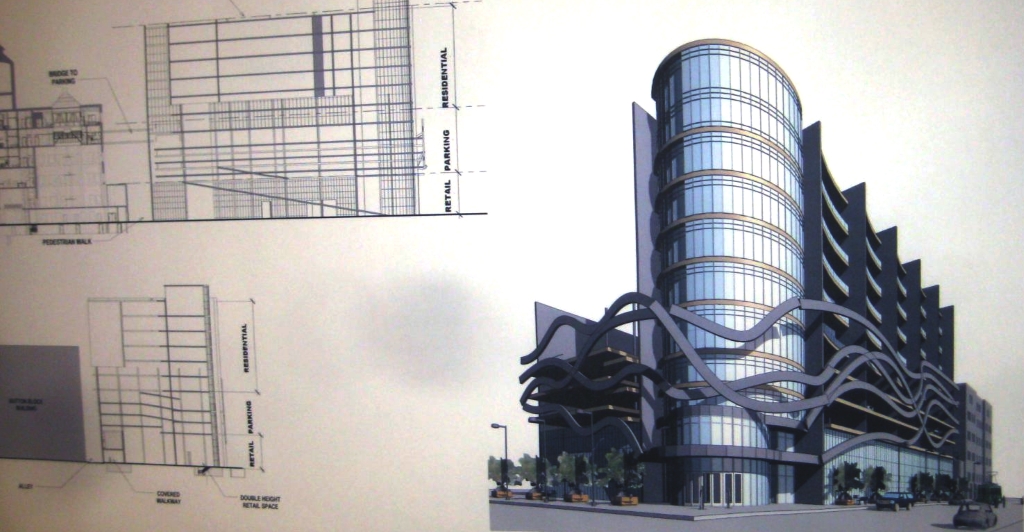
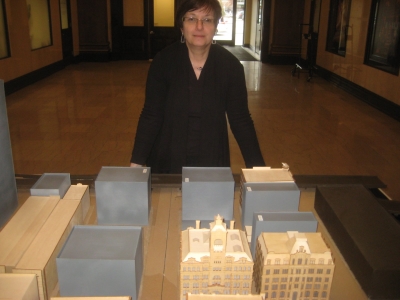
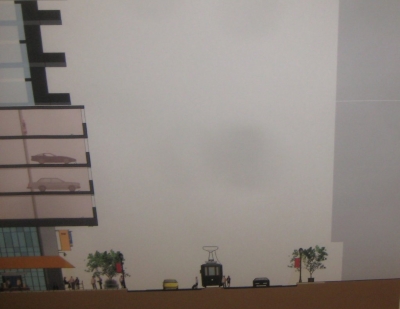
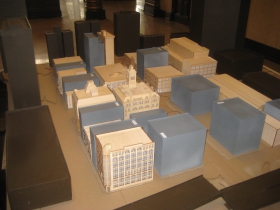
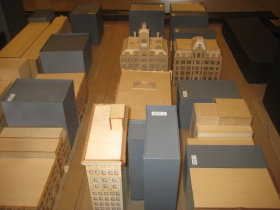
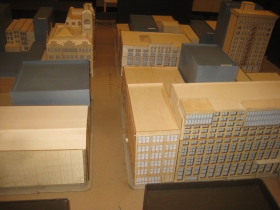

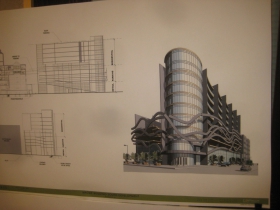
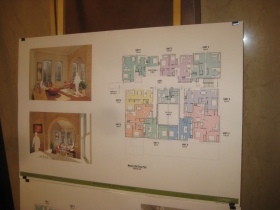
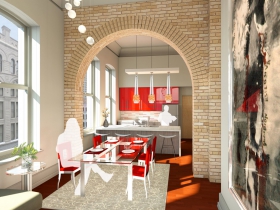
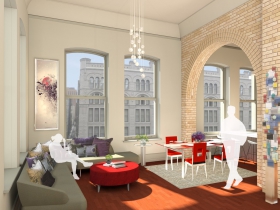
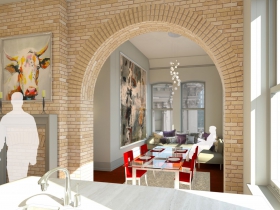
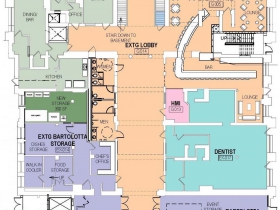
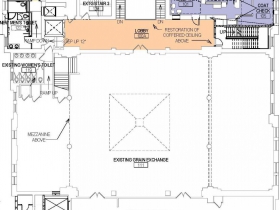
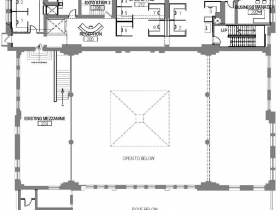























Intriguing. I always felt the Mackie Building was a tremendously under-valued architectural asset that could serve as the anchor for new development. This could also go a long way towards remedying the “no man’s land” between the Third Ward, 794, and Downtown.
In the age of 3D printers and computer aided design, we can do better. Is a revised classicism reflecting the late 19th and early 20th century flair beyond our collective thinking? Does 21st century need to reflect steel and glass, or can we not create complex and interesting form using terracotta and steel as the great Chicago architects did? I would suggest looking at the designs of Louis Sullivan for inspiration. http://en.wikipedia.org/wiki/Louis_Sullivan
So this is going where all those awful surface lots are? Yes please, get rid of those asap.
Just to clarify, is the proposed “Mackie South” building an actual proposal that they’re working to get built or is it more of a conceptual idea of what COULD go there in the future?
@AG It is our understanding this is a real project that they are working on.
Thanks Dave! Exciting stuff, it’s a fun design that’s quite different from anything else within a couple blocks.
@AG As noted in the story, the construction of a new South building is essential to the rehabilitation of the Mackie building, which lacks adequate interior staircases for fire safety reasons. The new building’s staircases will also supplement the existing building’s. Likewise, the huge Grain Exchange Room has only one entrance, and it would gain additional emergency egress.
What an area of immense potential, and what a great project bridging The Third Ward to the Downtown. Now to address creating inviting and hospitable well lit pedestrian evirionments beneath all the freeway overpasses. Chicago is hanging neon lighting beneath the Els, and Prague has great street car stations beneath highways. Expand the Clybourn commercial corridor concept from the Lake to the River to Marquette. Close the sore that is the dead blocks beneath the freeway. I love the idea of design innovation and energy efficient new buildings that could give a new front to the city as one enters by car or train. Fill in the blocks from the Grand Ave to Third Ward, in a similar manner with combinations of commercial, residential or office, also. It is all waiting to be done and needs to be.
I hope are leaders and developers and planners are taking this seriously. Good Job.
Can somebody call the grounds staff to remove the confetti that got caught during last night’s wind?